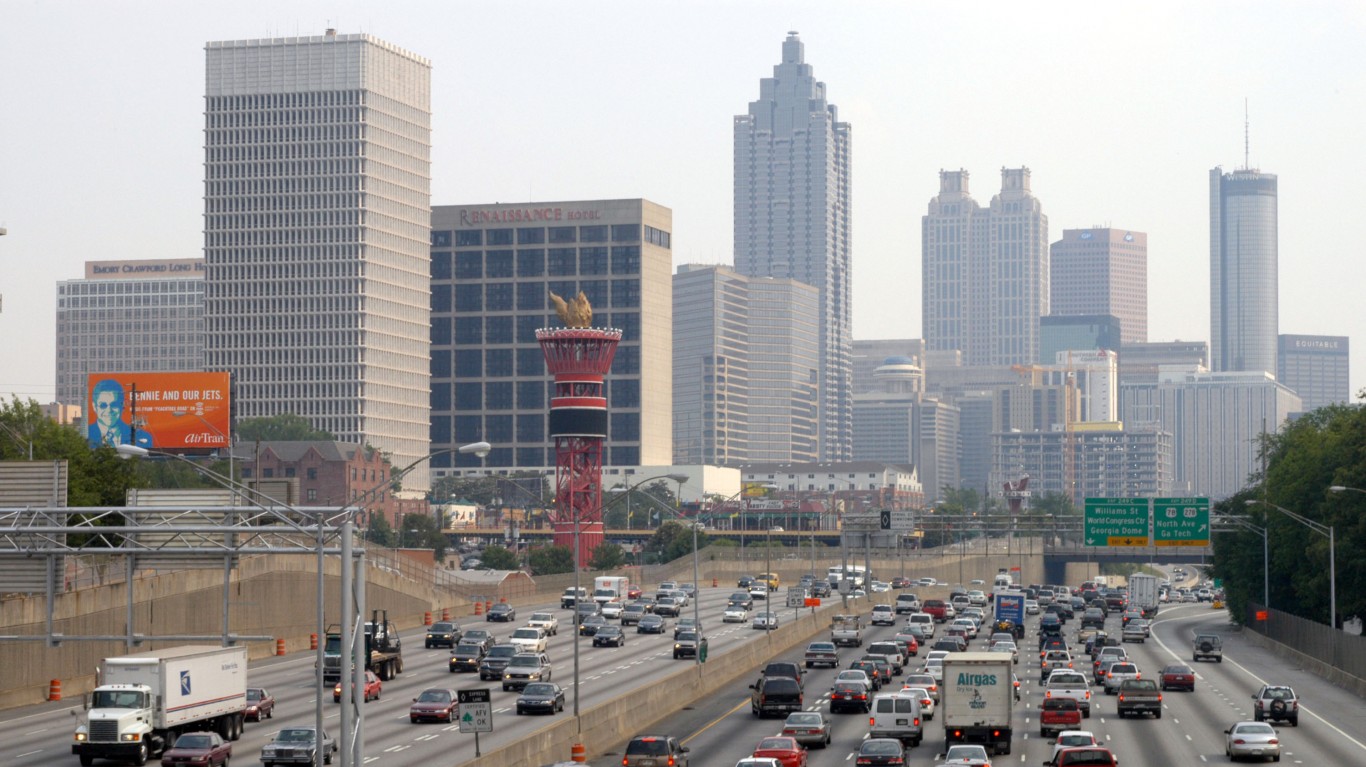
45. Atlanta, Georgia, USA
> Total emissions in 2014: 9.02 million tons of CO2 equivalent
> Transport, industrial, waste, and local power plants: 3.55 million tons of CO2 equivalent — #57 most in study
> Grid-supplied energy produced outside the city boundary: 5.48 million tons of CO2 equivalent — #33 most in study
> Population in 2014: 440,000
Atlanta has put together a climate action plan and a set of aggressive emission reduction goals, including having all residences and other buildings rely on renewable energy by 2035. The Plan was lauded by Al Gore in his encouragement for cities to step up in the absence of federal action. But a goal is not an accomplishment in and of itself, and Atlanta is falling short, in large measure because energy utilities control the fuel mix for available electricity.

44. Madrid, Spain
> Total emissions in 2013: 10.26 million tons of CO2 equivalent
> Transport, industrial, waste, and local power plants: 6.80 million tons of CO2 equivalent — #37 most in study
> Grid-supplied energy produced outside the city boundary: 3.25 million tons of CO2 equivalent — #46 most in study
> Population in 2013: 3.2 million
A member of the Association of Cities and Regions for Sustainable Resource Management (ACRR), and other municipal organizations focused on sustainability, Madrid unveiled its “Roadmap toward carbon neutrality” via an action based plan called “Madrid 360.” The plan focuses on decarbonizing the electricity system, and minimizing consumption of fossil fuels. And action has begun, with free electric bus routes and infrastructure changes that encourage bicycles and pedestrian traffic.
43. Detroit, Michigan, USA
> Total emissions in 2012: 10.33 million tons of CO2 equivalent
> Transport, industrial, waste, and local power plants: 5.52 million tons of CO2 equivalent — #43 most in study
> Grid-supplied energy produced outside the city boundary: 4.81 million tons of CO2 equivalent — #35 most in study
> Population in 2012: 721,000
Two years ago Detroit passed an ordinance by unanimous vote of the City Council committing to a range of climate change goals. As a first step the City will update its emissions inventory every four years to monitor the effectiveness of its efforts. A new Office of Sustainability has published an Action Agenda with 43 action items, including the expansion of a green jobs training program and the development of an electric vehicle infrastructure strategy.

42. Auckland, New Zealand
> Total emissions in 2013: 10.47 million tons of CO2 equivalent
> Transport, industrial, waste, and local power plants: 9.13 million tons of CO2 equivalent — #30 most in study
> Grid-supplied energy produced outside the city boundary: 1.34 million tons of CO2 equivalent — #67 most in study
> Population in 2013: 1.3 million
In 2018 Auckland had the highest CO2 emissions than any other region in New Zealand, and emissions continue to grow, along with Auckland’s population, despite the adoption of a Climate Plan. On a per capita basis, however, Auckland was one of the two lowest emitting regions, with most of the country’s CO2 coming from agriculture, rather than heating and cooling, manufacturing, and automobiles, the primary urban sources.

41. Columbus, Ohio, USA
> Total emissions in 2015: 10.98 million tons of CO2 equivalent
> Transport, industrial, waste, and local power plants: 5.49 million tons of CO2 equivalent — #44 most in study
> Grid-supplied energy produced outside the city boundary: 5.50 million tons of CO2 equivalent — #32 most in study
> Population in 2015: 825,000
Like cities all over the world, Columbus has seen at least one climate benchmark come and go without measurable progress. In fact, its CO2 emissions rose by 2.3% between 2013 and 2019, despite its goal to reduce emissions by 20% in 2020. At this moment Columbus is seeking public comments as it moves to complete a plan for achieving carbon neutrality by 2050.

 24/7 Tempo
24/7 Tempo





